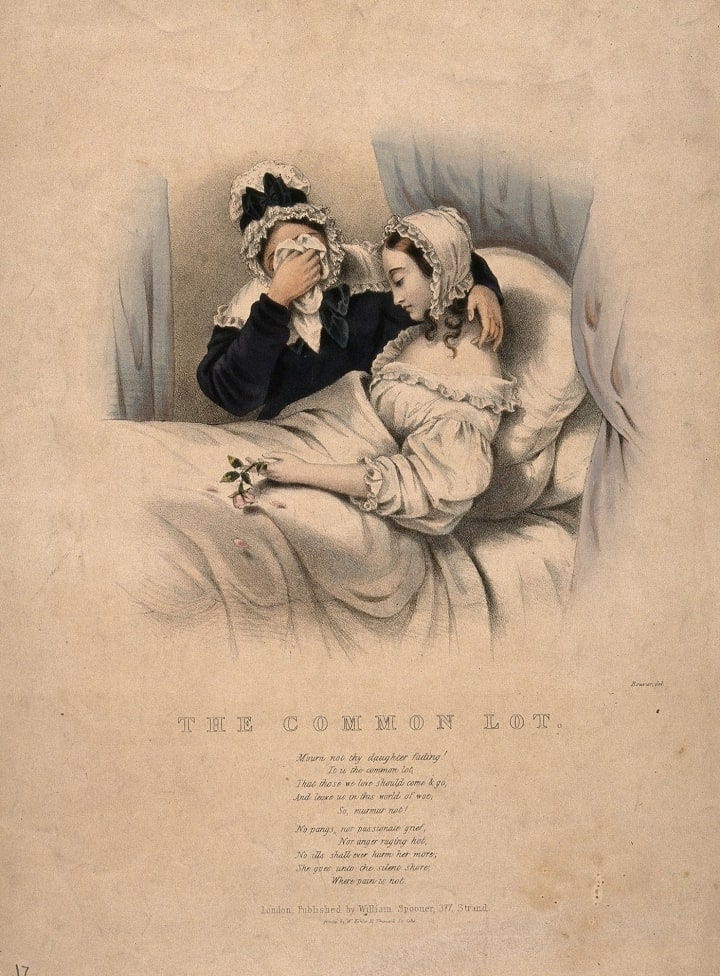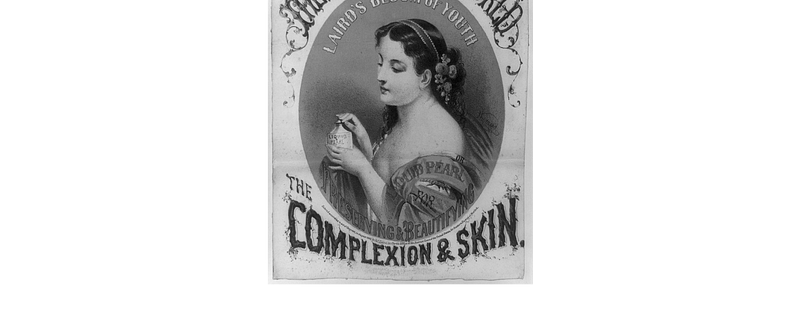Bizarre Beauty Trends of the Victorian Era: A Fashionable Folly
Written on
In the Victorian era, significant technological advancements spurred changes in social mobility, leading to the emergence of popular beauty trends. Women of this time engaged in daily beauty routines, some of which involved hazardous substances that posed serious health risks. From toxic makeup to constrictive clothing, many women risked their well-being in the pursuit of beauty.
Here are some of the perilous beauty practices that Victorian women adopted to enhance their appearance:
- The "Tuberculosis Beauty" Trend

Victorian women were fascinated by the beauty associated with tuberculosis, which often resulted in a pale complexion, rosy lips, and slim figures. This allure was so strong that some women deliberately sought to contract the disease, believing it would enhance their beauty. The mid-1800s saw tuberculosis, also known as consumption, romanticized despite its devastating effects on health. Women emulated the appearance of those afflicted, using makeup to mimic the pale skin and red cheeks typical of tuberculosis victims.
- Corsets for an Hourglass Figure

Many women relied on corsets to achieve the desired hourglass shape, but this quest for a smaller waist came with significant health risks. Prolonged use of corsets could displace internal organs, cause spinal misalignment, and lead to digestive issues. The tight lacing often resulted in injuries and made breathing difficult, highlighting the dangers of this beauty standard.
- Irritating Eye Treatments

To keep their eyes bright, Victorian women often applied lemon juice, which caused irritation and redness. Additionally, some used belladonna, a toxic plant, to dilate their pupils, believing it made them more alluring. Unfortunately, this practice frequently led to severe eye injuries and even blindness.
- Arsenic for Skin Bleaching

To attain the fashionable pale skin of the time, many women took baths in arsenic or used cosmetics containing this toxic substance. Arsenic was touted as a means to achieve a flawless complexion, despite the known health risks. Prolonged exposure resulted in severe health issues, including skin irritation, anemia, and other serious ailments.
- The Toilet Mask Craze

Invented in 1875 by Madam Helen Rowey, the toilet mask was a flexible rubber facial covering designed to beautify the skin overnight. Although deemed safe by chemical experts, it caused breathing difficulties as it tightly enveloped the face.
- Lead-based Cosmetics

To conceal blemishes, Victorian women often used cosmetics containing lead, which posed significant health risks. Products like the "bloom of youth" cream, popular in the 1860s, were notorious for causing lead poisoning and serious health complications, including paralysis.
- Ingesting Tapeworms for Weight Loss

Desiring to fit into the latest fashion trends, women turned to the drastic measure of ingesting sanitized tapeworms to lose weight. This method was marketed as a way to eat freely without gaining pounds, but it often resulted in nausea and digestive issues.
These bizarre beauty standards of the Victorian era reveal the lengths to which women would go for the sake of appearance. As the era came to a close, new trends emerged, but the legacy of these dangerous practices remains a cautionary tale in the history of beauty.